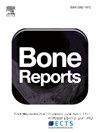Novel approaches to correlate computerized tomography imaging of bone fracture callus to callus structural mechanics
Abstract
Estimating the mechanical properties of bone in vivo without destructive testing would be useful for research and clinical orthopedic applications. Micro-computerized tomography (μCT) imaging can provide quantitative, high-resolution 3D representations of bone morphology and is generally the basis from which bone mechanical properties are non-destructively estimated. The goal of this study was to develop metrics using qualitative and quantitative aspects of bone microarchitecture derived from μCT imaging to estimate the mechanical integrity of bone fracture calluses. Mechanical testing data (peak torque) and μCT image data from 12 rat femur fractures were collected at 4 weeks after fracture. MATLAB was used to analyze the callus μCT imaging data which were then correlated to the empirically determined peak torque of the callus. One metric correlated Z-rays, linear contiguities of voxels running parallel to the neutral axis of the femur and through the fracture callus, to peak torque. Other metrics were based on voxel linkage values (LVs), which is a novel measurement defined by the number of voxels surrounding a given voxel (ranging from 1 to 27) that are all above a specified threshold. Linkage values were utilized to segment the callus and compute healing scores (termed eRUST) based on the modified Radiographic Union Score for Tibial fractures (mRUST). Linkage values were also used to calculate linked bone areas (LBAs). All metrics positively correlated with peak torque, yielding correlations of determination (R2) of 0.863 for eRUST, 0.792 for Z-ray scoring, and 0.764 for a normalized Linked Bone Area metric. These novel metrics appear to be promising approaches for extrapolating fracture callus structural properties from bone microarchitecture using objective analytical methods and without resorting to computationally complex finite element analyses.

 求助内容:
求助内容: 应助结果提醒方式:
应助结果提醒方式:


